Jay’s Audio CDT-2Mk2 and DAC-2 Signature
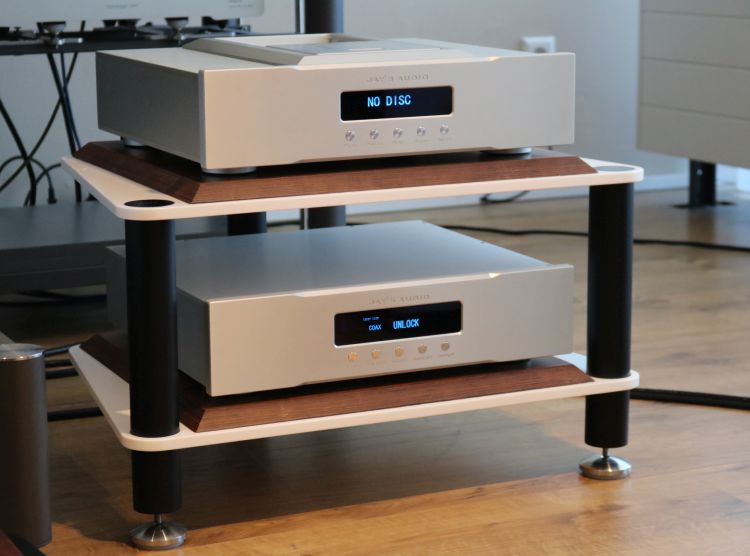
Review samples provided by Boelsz Audio
Retail prices in the Netherlands, including 21% VAT:
CDT2-Mk2 – 2.495 euro
DAC-2 Signature – 2.995 euro
Chinese-made products have not always enjoyed the same reputation as well-known western brands but, based on recent experiences, I am confident in stating that it is about time to change our collective minds about this. Initially often copying existing designs, these days, an ever-increasing number of reputable Chinese companies are making their own designs and produce high-quality audio equipment that challenges the performance of competing traditional brands at a lower cost.
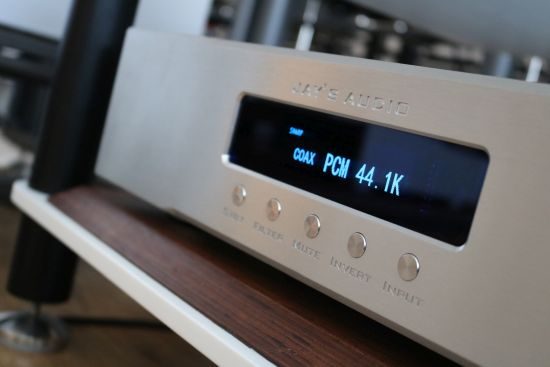
Spearheaded by Jacky Ho, Jay’s Audio is one such brand. But not only does Jay’s Audio make high-quality equipment, but they also place special importance on the durability of the internal components. Of all the internal components, the transport mechanism itself is often the first part to wear out and in order to take away any concerns about this, the internal construction of the player has been conceived such that the owner can quickly and easily remove the transport mechanism and replace it him or herself, negating the need to ship the player back to the factory. Don’t worry – Jay’s Audio has made sure to stock more than enough mechanisms.
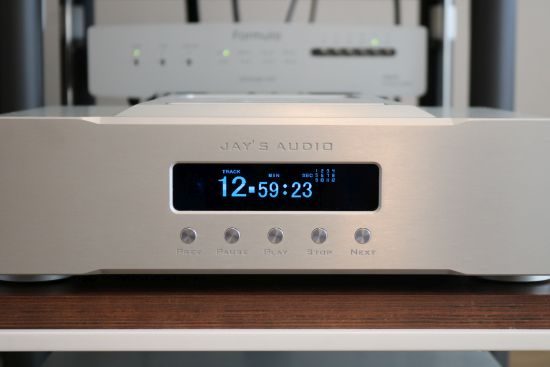
Of course, the quality of the mechanism will weigh in very heavily in this. Suppliers for CD transports are disappearing. Philips had already discontinued the production of the popular CD-Pro 2LF mechanism in 2013 and major supplier Enco has recently announced to now be “technically sold out of these drives”. With Sony already having left the scene a while ago the last surviving quality manufacturer was Sanyo but they, too, may now have left the party. Available still are pretty much only CD-ROM parts of questionable quality. So, what is a quality-conscious manufacturer to do?
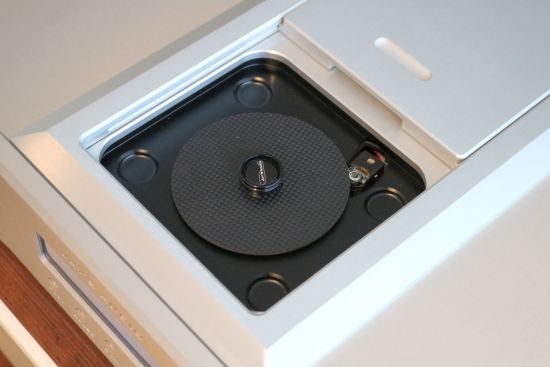
Jay’s Audio has made what I think is a very wise decision by choosing to use NOS (New Old Stock) Philips CDM-4/19 transport mechanisms. Not only do these mechanisms have a uniquely liquid sound, but they are also indestructible and seem to last forever. I own several classic 30+ years old Philips CD players and have friends that own many more that all use this particular transport and not a single one has ever had any issues. So, while it is comforting that the CD mechanism can be swapped by the user if needed, it is highly unlikely that this will ever be required.
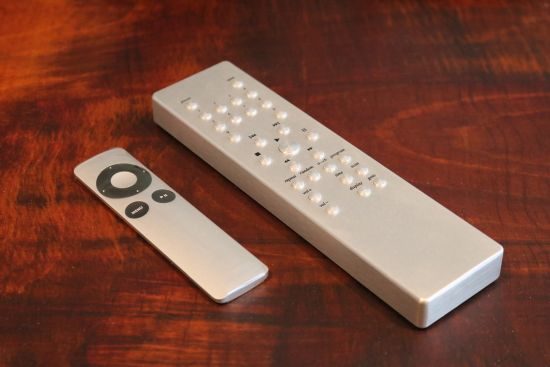
Above: the custom-made remote control on the right-hand side is for the CD transport. For the DAC, there is no custom unit. Instead, the supplied Apple remote is used.
Made from thick and well-fitting brushed aluminum panels and at 15 kg for the transport and 20 kg for the DAC, the Jay’s Audio components are built and finished so very precisely that they could pass for any number of high-priced high-end brands. In operation, everything feels solid and smooth and this is precisely what Jay’s Audio is aiming for. Of course, Jay’s Audio is not only concerned with the build quality, but the sound quality is also equally as important. All their components are tuned using selected components to sound precisely as intended. They use only the best internal components sourced from all over the world such as Noratel transformers, Holco resistors and Audio Note capacitors from the UK, Crystek Femto Clocks from the USA, Nichicon and Amtrans capacitors from Japan, and, of course, the famous Dutch Philips CDM-4/19 transport. Jay’s also used to have a CDT3-MK2 in their portfolio but this player used a CD Pro 2 mechanism which is no longer available and so, this product has been dropped.
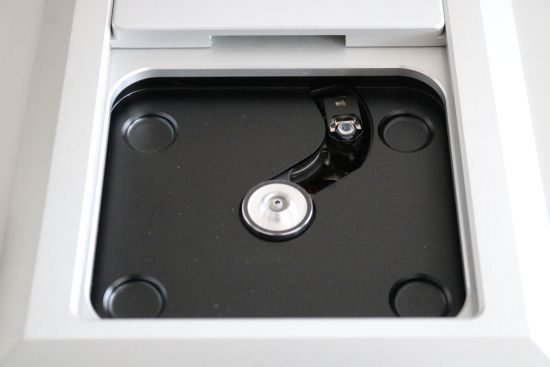
While the CDP-2 integrated CD Player’s converter section employs the Soekris dam1021 R2R DAC, the DAC-2 Signature reviewed here is built around Dual AKM AK4497EQ DACs that can process all popular bitrates and sample rates, including DSD. I asked Jack Boelsz of Boelsz Audio about this and he confirmed that Jay’s Audio considers the AKM’s to be of higher quality, hence their inclusion in the top-tier converter.
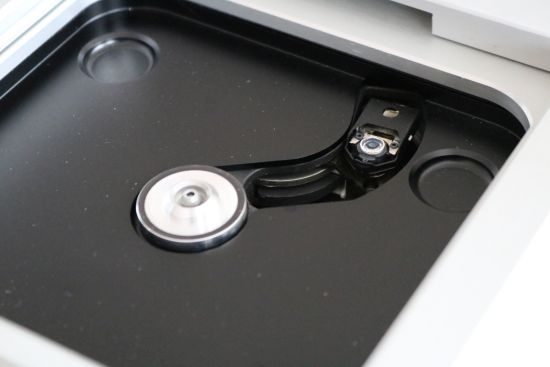
After having focused on the design and manufacture of CD transports and CD Players using the Philips CDPRO2 LF and CDM-4 mechanisms for nearly two decades, today, Jacky Ho still feels that standalone digital CD transports are the best way to reproduce music.
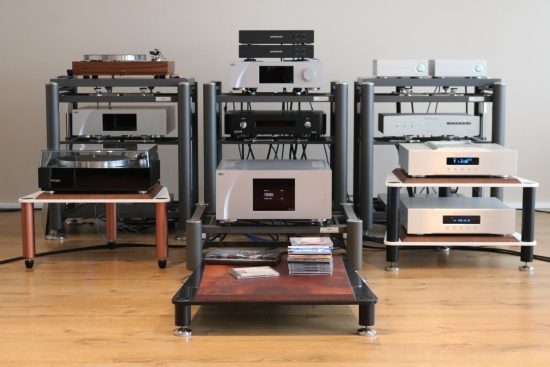
Listening
The CD transport and DAC were first listened to as a combo using the Lejonklou Sagatun dual mono preamplifier, CH Precision A1.5 power amplifier, and Kroma Audio Carmen loudspeakers. The Jay’s units were connected with Belden power cables and Siltech Paris MXT interlinks and the supplied Sony HDMI cable and a Belden RG59 cable to assess the differences between coaxial and I2S. Connected simultaneously for comparison was the Antipodes CX+EX server combo via a Final Touch Audio Callisto USB cable. Listening started with the coaxial connection with the DAC-2’s filter set to the NOS mode. I played around with the other modes but find that these make for differences so subtle that I could not really decide on a favorite.
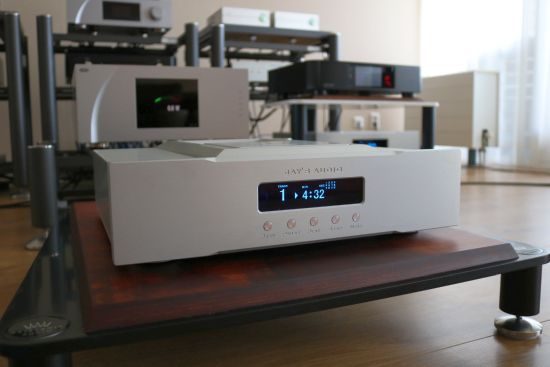
After only a couple of notes, the music already grabbed me. This was properly good! With a grin on my face, I turned up the volume and got immersed in the music. Meanwhile, I noticed that this combo really has the rhythm part down, as evidenced by my tapping foot. I am used to listening to very high-end equipment and so I was not expecting this kind of performance from the Jay’s units. This is a very musical combo, so much is sure! In addition to being rhythmically infectious, the sound is fluid and spacious and articulate and lively at the same time. These aspects don’t often go together but here, they do. It’s a big and generous sound. The bass has an almost Wadia-like solidity and the tonality is very natural and convincing. There’s absolutely no artificiality here and every CD that I spin with the combo sounds pleasant and engaging as well as vibrant and propulsive and without ever being the least bit dry.
The transient behavior is fast but not too fast. Some ultra-fast components can sound so incisive and narrow-banded as to leave out textural richness and tonal density but this is not the case here. Rather, the attack is just right and the notes are nicely filled out with perfectly natural sustain. Decay, too, is spot-on, neither cut short nor lingering on too long at the expense of incisiveness. It does not happen very often but there’s absolutely nothing that I could say that is detractive to this combo’s performance. Well, ok, if I set the nitpicking knob to eleven then maybe there’s one thing I could say. There are DACs that sound even more crystalline. It’s not that the resolution is lacking at all but you can find DACs that are even more highly resolving. Naturally, no audio component offers everything in equal measure and more analytical DACs at this price level inevitably make sacrifices in other territories but if you are looking for the utmost in microscopic detail-retrieval, then maybe the Jay’s Audio components are not for you. But everyone else should definitely read on. What we have here is the kind of performance that competing European or American products would charge double to triple for.
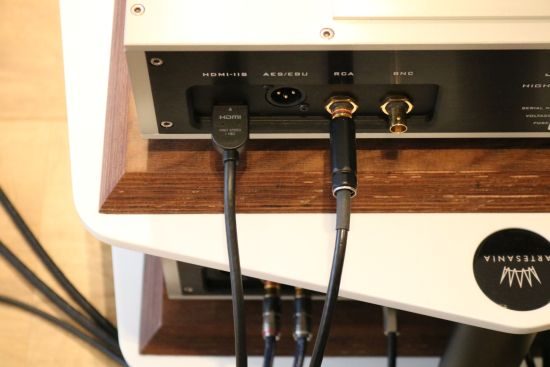
I2S
In theory, I2S connections should sound better than any other connection method where the clock is muxed with the signal as it is with SP/DIF, and my personal experience confirms this. Different connection methods shouldn’t really alter a component’s character and here this is indeed not the case. Using the supplied Sony HDMI cable, the transport has all the same sonic attributes as via coax but it provides it all with more conviction. Mostly, the difference is in the bass, which is tighter and more articulate and easier to follow. There’s tighter pacing and less rounding off, less clutter and a more clear-cut sound with an overall more upbeat and propulsive delivery. Going back to coax, the delivery certainly does not collapse or anything, rather, it’s still great, only slightly less so. But it’s enough to make me prefer the I2S connection.






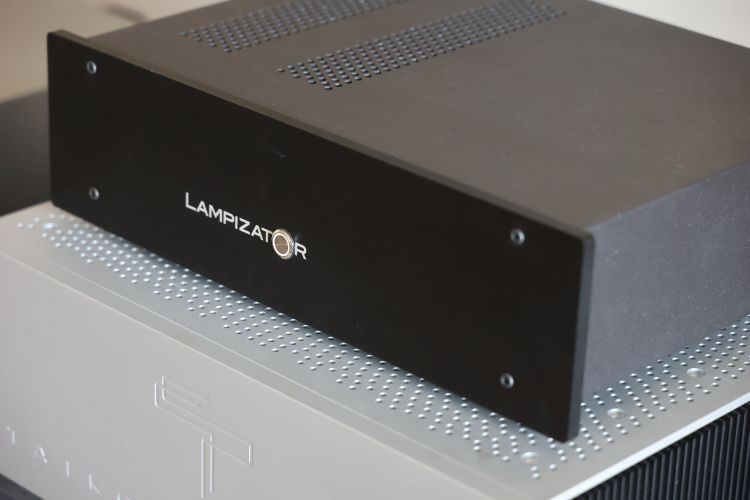
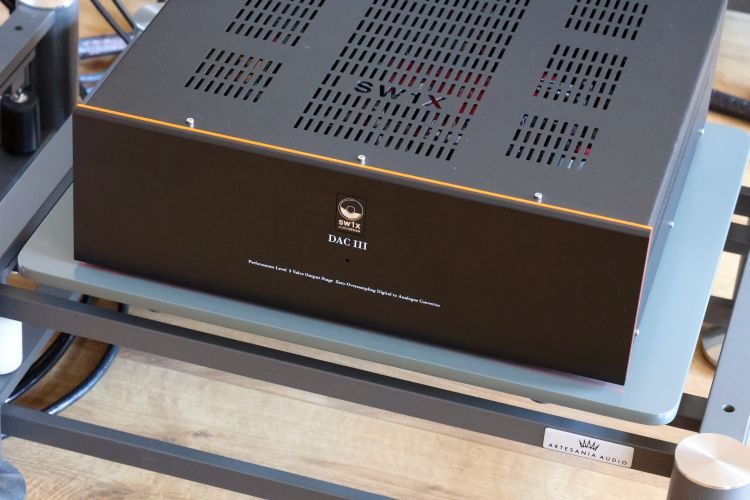
Hi Christiaan,
Sold my jay audio cdt2 which I had for about 7 mths.
If you have the opportunity, please consider having published review of even more cost effective Denafrips Avator with same Philips CDM 4 transport but with clock input as well as more i2s outputs than just single hdmi of the cdt2.
Used with the special order of Denafrips Terminator Plus (replaced my 10 mths old standard Terminator) with oxco clock and synced with the Avator’s clock input, it is endgame of my system in near future with Audible Illusion L3A pre amp, Sanders Magtech amp and Revel Salon 2 speakers for me and back to CD playback last many days and nights.
Btw, many thanks also on the Antipodes which I took the plunge and just received together with local purchase of 2x Samsung EVO 4TB SSD … will soon hear how it performs against the oxco clocked Denafrips Avatar soon.
Cheers.
Richard
Hi Richard, I may well review the Avatar indeed. The unit certainly looks interesting.
I’m curious to hear how you experience the Music Server versus CD player sound. So far, I have not heard a server that truly equals a good CD transport on all accounts. Servers can certainly better CD transport in some aspects but they all do some aspects better than others. It also depends on which CD transport/CD player you compare it to. Antipodes is particularly great in terms of solidity, transient behavior and overall dynamics. All the servers that sounded more fluid or refined also sounded rounded and too mellow for me. It remains interesting why a theoretically inferior format can sound so great.
Hi Christiaan,
Thanks for your quick response and further sharing.
By itself and with the standard Denafrips Terminator, the sgd1.8k Denafrips Avator sounded only a bit better but notably so than the sgd2.6k Jay’s cdt2 mk2 when I bought it.
It is when I installed the Terminator Plus with oxco clock out to the Avatar that the Avator stepped up to a different league from the Jay’s cdt2 mk2.
Furthermore, I am using the Avatar’s i2s output to the Terminator Plus which when compared to aes/xlr output/input was also obviously with wider up/down and left/right staging, clearer/more extended frequencies and cleaner/darker presentation.
Hope this clarifies a bit more but Antipodes via usb without synced clock will be put to task and there is no chance for me to venture to Aurender W20/se with clock input/ouput but I am a converted believer now on what a superior clock especially synced to DAC’s can achieve in sound quality improvement.
Cheers.
Richard
Hi Richard, all clear:-) I’ll keep the clock option in mind.
Hi Christiaan!
Just reading your observation ’bout Jay’s Audio cd transport. Wondering why you didn’ t compare Jay’s transport with Ayon’s?
I believe major thing when listening is synergy between components. I can tell you my example. My setup consist of Ayon S-5 dac/preamp/streamer and I tried few transports (Northstar, Accustic Arts Reference Drive II and Ayon CD-T II).
With Northstar my system was ok, but the sound was not as good as with computer audio. After that I put Accustic Arts transport (12000 €, ouch!) and I was amazed how Accustic Arts put cd reproduction to new dimension way ahead of computer audio reproduction.
And best for the last, Ayon Audio CD-TII (half the price of Accustic Arts), put sound to even greater level. I’m sure it’s because of the synergy between Ayon components…
Oh, btw all three transports had the same Philips Pro II drive, and all sounded different!
Just my observation!
By the way, GREAT blog!!!
Best regards from Zagreb, Croatia, Europe!
Jurica Kosovic
Hi Jurica, Glad you like it! Alas, I can only compare to players that I have available. The CDT-II has returned to the manufacturer long ago. Yes, synergy is a very big thing and this is what I emphasize in nearly every review. Also, I agree that transports can sound very different, even if they use the same mechanism.
Hallo Christiaan,
Hoe verhouden zich kwalitatief de Sony xa50es en de Marantz cd94mk2 tot dit loopwerk van jay? Mvg, jeroen
Linear Sony mechanisms sound very different from Philips swing-arm mechanisms. Please have a look at the Classic Philips/Marantz comparison to read more about this. In short, the XA50ES as a transport sounds lean and tight, a little restrained and timbrally synthetical, ie it does not really sound natural to me. Any CDM1/CDM4-based transport that I tried, even old and worn ones, sound riper, fuller, sweeter and more spacious. Most of them also sound timbrally more convincing. Older ones or ones that have gone off-spec can go overboard in ripeness and become too slow and woolly. Between Jay’s and the CD94 it really depends on how good the CD94’s mechanism and electronics still are. Without a recapping, most of them will by now have gone off-spec. They do this gracefully but become slow and dull in the process. A CD94 in factory condition will sound close to the Jay’s in terms of overall character (fluid, refined and free-flowing) but likely still different due to the difference in the power supply quality, capacitor brands and the quality of the clock crystals.
Hello Christiaan,
I had fun reading your review in 3 episodes, which I found very well done and very informative, well done and thank you! However, have you heard of Denefrips’ Avatar transport cd player which uses a mechanism similar to that of Jay’s Audio? And then there is also the DAC Denefrips Terminator! It could be very interesting a comparison between the two, what do you think?
Looking forward to reading you !
Best Regards
Pascal
Hi Pascal, glad you liked the review. I know of the Terminator and have reviewed the Venus. Indeed, I noticed that Denafrips have a transport similar to the Jay’s but as of yet, there are no plans to review it.
…. … There is also the DAC 300 from the French manufacturer Atoll (2495 € / 2810 $) which could be interesting to test!
Hi Christiaan ,
Thank you very much for your time to respond! Thank you for the link while waiting for a possible review of the Dac Terminator and the CDT of the same brand, which would lead to a duel Denefrips vs Jay’s Audio! Héhé …
Best Regards
Thanks for the great review!! I am looking for a high end (not SOTA) transport that will improve on the already good sound I am getting using the EAR Acute as a transport, but for a reasonable price such as the Jay’s Audio. This is one heavy transport for under $3,000, 15 kg. Does it track burned discs and discs exceeding 80 minutes? Cyrus XT signature transport is about the same price but reportedly is critical of CD quality(?). Reviews of Cyrus are not specific. Also, I noted that there is no pause button. How does one pause during play? Does one have to fast forward or backward to get back to the place one stopped at?
Hi Stephen, I’ve not heard the EAR Acute but it uses a very simple Sony transport and typically a change from a Sony mechanism to a Philips Swing-Arm mechanism yields a sweeter and more liquid sound, as described in the Jay’s review. Philips CDM4’s are extremely reliable and I’ve never found one that did not read a CD. The Jay’s uses a NOS CDM4 mechanism and also reads all the CD’s that I have fed it, including very old CDR’s. Even though the Cyrus does not have a dedicated pause button on its front panel, its play button is a toggle between play and pause. Depending on what it’s doing, its either play or pause. The remote control does have a dedicated pause button.
Hi Christaan,
How does the DAC compare to the Jeff Rowland Aeris?
Honestly, you can’t really compare these products, not only very different sonic presentations but also too big an overall performance gap. Although I have upgraded several times after the Aeris, I still feel that it is a very good DAC. In short: the Jay’s is more like a Wadia: robust, sonorous, a little dark and a little rough. It also bears some resemblance to the Esoteric D-07, the PS Audio PWD MkII and, to a lesser extent, the NWD. The Aeris is much more fluid and refined and is a bit like the Bricasti M1 Classic but a little fuller and sweeter and slightly less highly resolving. It also has some similarity with the Accuphase DC-37 (but the Aeris is actually better, IMHO). There is enough solidity in the Aeris’ bass to satisfy my needs but it’s not entirely up to Wadia standards. The main areas in which the Jay’s differs from the Aeris is that it has more sonorous bass, even more impact, and a more natural timbre.
Maybe you can inform me as to the differences between the Jay’s Audio CDT-2Mk3 (new version) and the Denafrips Avatar which look the same and similar inside but differ in price and some features. My main concern is the pause/continue feature lacking in the CDT2-Mk2 version. I don’t know if the Avatar has the same problem.
Good question. I’ve not seen or used either just yet. I’m not sure what you mean by the pause/continue feature. The CDT-2Mk2 has a pause button and it works as expected. As with normal Philips servo systems, pause means pause and unpause while play means play and replay.
Dear Christiaan,
I happened to be a big fan of your articles / reviews, which I have been reading for past couple of years. Therefore I would really love to know your opinion on two subjects.
I owe the CD transport Jays Audio CDT2 mk2, which I bought roughly half a year before you published your review. I totally agree with everything you wrote and I honestly find your review the most accurate from all the ones Ive read. I even connected digital S/PDIF cable Mad Scientist HDC after reading it, and I can also confirm that the connection with Jays Audio makes it a fantastic digital source. Unfortunately, there is a small catch: there are irregular outages of sound lasting about half a second during playing a CD. I have tried several digital cables and I am unfortunately experiencing this trouble only with Mad Scientist HDC. Have you ever experienced something similar?
I also loved your review on Jorma Design AES/EBU digital cable. I am planning to get in touch with Jorma Design and buy this cable in S/PDIF. I trust everything you wrote in your review, but nevertheless I have a question: could you describe the sound difference between Mad Scientist and Jorma Design? Is Jorma really that good? I would really appreciate your opinion on this matter.
Sincerely,
Jaroslav
Hi Jaroslav, I have heard of instances where a Mad Scientist USB cable does not match with a certain chipset. That’s because it is deliberately made to work outside the strict format specifications, in order to gain a sound-quality advantage. The USB cable parameters can be tweaked by the manufacturer on demand. Not sure if the HDC cable can also be tuned. In any case, do write the manufacturer, just in case.
Just how the HDC and Jorma compare I cannot say right off the top of my head as I never had them side by side and the last time I used the HDC is a long time ago. However, I am expecting a couple of new Mad Scientist digital cables for review shortly.
hi christiaan
any chance that you ‘ll be reviewing a chord dac (qutest, hugo TT2, or Dave) and compare these with this combination or your other (reference) dacs?
Bye, Jeroen
I might do at some point but it’s not yet on the horizon.
Dear Christiaan,
It seems like the discontinued Denafrips Avatar CD transport was a really short-lived product, do you know why?
The buzz now all seems to be about the Jay’s Audio CDT2-MK3 (Philips CDM4/19 mechanism) and the new CDT3-MK3 (Philips CDPro2 mechanism). I thought the CDPro2 was “sold out”. Can Jay’s have acquired a large NOS stock? If you develop a new product based on it, the stock has to be fairly big, I would think for it to make sense.
I hope you get a chance to hear the new CDT3-MK3 and let us know your thoughts.
Best regards,
Per
I tried to get an Avatar review sample but Denafrips ran out of NOS CDM4 mechanisms of which they indicated to have had 4000 pieces. It’s certainly remarkable that they found the supply 30 years after production stopped. Nevertheless, I have removed the CDM4 from my CDT2, studied it up close from all angles, and compared it to the original CDM4’s that I have and I could not find any differences.
I have not heard the Mk3 version of the CDT2.
Given the case of the CDM4 for Yay’s Audio and Denafrips, it is interesting that an Asian company struck gold once again and found a large supply of CD Pro2 mechanisms as they are fast becoming unobtainium. A single NOS CD Pro2 currently costs 1000 euros from Enco, the last remaining source that I am aware of. I guess it’s plausible that these are actually refurbished or newly produced mechanisms. Which is still fine of course, if they operate as intended.
All that said, if a CDT2-Mk3 comes my way, I will certainly review it.
Update 27-04-2022: As a matter of fact, I have just been asked to review the brand new Jay’s Audio Flagship CDT3-Mk3. I took the opportunity to ask about the CD-Pro2 mechanism. Here is the manufacturer’s response: “The CDPro2 LF mechanism is NOS with Jay’s Audio modification. Jay’s Audio stock sufficient units to fulfill the market demands, as well as for future servicing needs.”
Hi Christiaan,
I am deciding between purchasing of this Jays CDT 2mk3/DAC combo and Mark Levinson 390S in very good condition after service. Could you please describe the differences in the sound off the top of your head, is the new combo much further, or can the old 390S be better in some aspects?
Thanks
Jan
Hi Jan, It’s more a matter of personal preference than one of quality. The Levinson is smoother, airier, and more refined, while the Jay’s combo sounds more robust and dynamic.
I had a choice between the two units and spent double for the CDt3 Mk3. It is AMAZING! I’ve had over two dozen various cheaper transports and a PS Audio at an even higher price. No comparison in quality. This is IT! If I couldn’t have bought the CDt3, it would have been the CDt2. I considered several others I haven’t heard, the Aqua and the T&A 2000. My prior favorites used CDM9 transports. It will be paired with a Lampizator Poseidon, currently paired with a radically upgraded Emotiva XDA1 (analog board, no Opamp) which includes 5 Sparkos regulators ($47 each) among the vast power upgrades. For $1000 DAC upgraded and $5,000 transport, finally great digital sound!.
P.S. I have nearly 16,000 CDs (need to cull about 3,500-4,500).
Nice! I thought I had quite a few but 16.000 is something else:-)
Thank you for good advices. And how can you compare sound of the same 16/44 track from CD on Jays CDT3 mk3 +Jays DAC with Grimm MU or Antipodes K server + streamer with the same DAC? Can CDT3 CD transport sounds better than Antipodes or Grimm server?
The Grimm and Antipodes servers are reliant on the SQ of Roon, which, sadly, wavers with every release. When the MU1 was at its best, it was very hard for a CD player to come close or beat it in most areas. But as Roon sounds currently (smooth but blurred/compressed), it can be relatively easily bettered by a good CD transport. However, all servers and CD players have their own character, and “Better”, as you ask, is a relative matter up to the listener. As such, there is no “best” server nor a “best” CD player. My advice is to read my reviews in which I make lots of comparisons, and then make up your own mind.
Hans Beekhuyzen on his YouTube channel extolled the superiority of his Grimm MU1 to any CD playback INCLUDING the Jay’s CDt3 Mk3 (he reviewed). However, his credibility sank when I asked him if he listened to CDs his answer was “I listen to cds after I have ripped them to a hard disk.” Apparently, he also considers his system superior. I can assume from his answer that he does NOT listen to historic recordings of lesser sonic quality such as found on Marston, Romophone or Biddulph labels which mostly deal with vocal, piano and string 78 recordings. There is no streaming of these labels. He did not answer whether I should dump a Lampizator Poseidon DAC/pre-amp and Westminister Labs REI amps for his system and just go with a cheap transport with his Grimm MU1 to achieve sonic nirvana. I’m into music, not audiophilia. I can now afford a high end system for my quite large music collection which I listen to daily for several hours. Plus, apparently only 15% of the streamable music is of CD quality mastering or better. At numerous recent audio shows, my friends and I have experienced many high end systems with bad (not even mediocre) sound that relied on streaming. I say, if one has the CDs, choose the best CD player or separates one can find. My neighbor has 3,000 CDs but uses EAC to his computer and thumbdrives/chips (portable use as well) to listen with a complex electronic system (Berkeley, DAC and other computer equipment) to find and listen to his music. It does sound great on his $1/2 million system but so much work!
I prefer to just pop in a CD. I also listen to LPs and that’s more ritual prior to listening. With the Jay’s, I love CDs as much as analog now. Half of my collection is housed in organized sliding Can-Am steel drawer cases in my adjacent storage room. Just wonderful. Maybe the Grimm is better for “a few” recordings but it would leave out 90% of my collection.
Thank you very much, Christian and Stephen. You are both correct. If I had the biggest CD collection in the world like Stephen, I wouldn’t even ask, I’d already have the CDT3. But I only have 500 pcs, but also a similary large collection of 16/44 and hi-res flacs and dsf. I now have a Lampizator Amber 3 DAC and a Melco N1A/2 streamer. But we tried the Theta Carmen CD transport with the Amber3 and the same recordings sounded more fun and fuller and closer to the reality of the CD, albeit with a little lower resolution and spaciousness. So I looked for CD or CD transport as a solution. But the more I read in the tests and on the forums, and according to Christian’s answers, I finally decided to buy a top streamer. A CD is better than a medium-priced streamer, but the top streamers are further in resolution, fullness, spaciousness and dynamics. So I’ll focus on a selection from Melco N5, Metronome Le Streamer, Fidata HFAS2-X40, Pachanko Constellation SE+ Stellar+Oliospec, Antipodes K22 G4, Grimm MU1, Jcat XACT S1 and LDMS (Taiko Extreme, Pinkfaun 2.16 and Aurender W20SE are too expensive). Which one can have the best sound/price ratio? I demand maximum transparency, fullness, spaciousness and timbre.